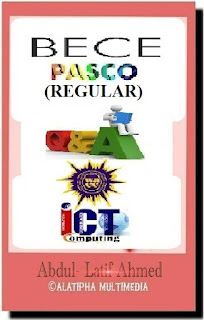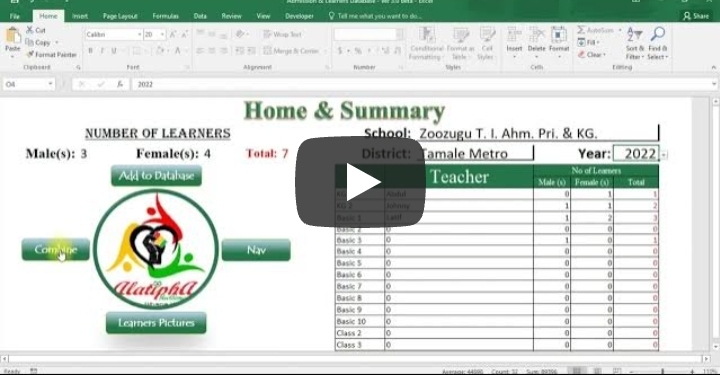Chapter 2: Understanding Your Students
Chapter 2:
Understanding Your Students
Chapter Overview
Chapter 1 explained that teaching is not simply the transmission of knowledge from teacher to learner but rather is the interaction of teacher with learner. This chapter discusses the decisions you must make about whom you will teach. In subsequent chapters, we consider the decisions you must make about what and how you will teach.
Not so long ago, students were viewed as empty vessels into which the teacher poured the contents of the day's lesson. Teachers perceived their task to be the skilled transmission of appropriate grade-level content as it appeared in texts, curriculum guides, workbooks, and the academic disciplines.
Contradictions arose from such a simplistic definition of teaching and learning. For example, this definition could not explain why some students get poor grades and others good ones even when the teacher is skilled at transmitting the contents of the day's lesson. Nor could it explain why some students want to learn, whereas others do not even want to come to school; why some students do extra work and others do little at all; or why some students are actively engaged in the learning process while others are not.
These are just some of the individual differences that exist in every classroom that can influence the outcome of your teaching, regardless of how adept you may be at transmitting the content of the day's lesson. Adapting your teaching to individual differences will require you to make many decisions about your learners that cannot be reduced to simple formulas or rules. It will require that you become a reflective teacher, which means you take the time to ask tough questions about the success of your teaching efforts and the individual differences among your learners.
Reflective teachers are thoughtful and self-critical about their teaching. That is, they take the time necessary to adapt their lessons to their learners' needs, prior histories, and experiences, and to analyze and critique the success of their lessons afterward.
To help adapt subject matter content to the world of their learners, reflective teachers use their learners' prior experiences and what they already know as instructional tools. By de-emphasizing lecturing and telling, reflective teachers encourage their learners to use their own experiences to actively construct understandings that make sense to them and for which they can take ownership. In other words, reflective teachers bridge the gap between teaching and learning by actively engaging students in building lesson content and encouraging them to gradually accept greater responsibility for their own learning. In the chapters ahead, we have more to say about how you can become a reflective teacher who adapts subject matter to the individual differences of learners and who uses student experiences and the dialogue of the classroom to actively engage students in the learning process. In this chapter we will provide some important facts about the psychology of your learners that will help you understand and appreciate their individual differences.
This chapter introduced you to the diversity of students found in classrooms and how this diversity must be acknowledged in your teaching methods. Its key terms and main points were:
Why Pay Attention to
Individual Differences?
Early conceptions of teaching viewed students as empty vessels into which the teacher poured the content of the day's lesson. These conceptions failed to consider the effect of individual differences on learning.
A knowledge of the individual differences
among learners is important:
·
to adapt
instructional methods to individual learning needs, and
·
to understand and
place in perspective the reasons behind the school performance of individual
learners.
The Effects of General
Intelligence on Learning
One misunderstanding that some teachers and parents have about intelligence, or IQ, is that it is a single, unified dimension.
Specific aptitudes are more predictive of success in school and specific occupations than is general intelligence.
Knowing your learners' specific strengths and weaknesses and altering instructional goals and methods accordingly will contribute to greater learning than will categorizing and teaching your students according to their general intelligence.
Learning Intelligence Behaviours
- Specific definitions of intelligence and the behaviours they represent commonly are called aptitudes.
- One of the practical classroom applications of Gardner’s theory of multiple intelligences is allowing students to take differentiated paths to achieve a common goal.
- Social-emotional intelligence is important in the classroom for recognizing one’s own mood in order to change to best fit the task, to control one’s impulses and not overreact, and to recognize one’s impact on others and to change accordingly.
- Sternberg suggests that confronting novel tasks and situations and learning to deal with them is one of the most important instructional goals in learning intelligence behaviour.
The Effects of Prior
Achievement on Learning
Task-relevant prior learning represents the facts, skills, and understandings that must be taught if subsequent learning is to occur. Mastery of task-relevant prior learning often is required for subsequent learning to take place.
The Effects of
Cultural Differences on Learning
An important characteristic that distinguishes lower-class children from middle-class and upper-class children is that the latter more rapidly acquire knowledge of the world outside their homes and neighborhoods.
Language and Cultural
Diversity
The cultural deficit model emphasizes what is missing in the child using genetically or culturally inspired factors, such as aptitude and language, to explain differences among culturally diverse and mainstream students. Rather than focus on a learner's "deficits," the cultural difference model focuses on solutions that require more culturally sensitive links to and responses from the school and educational system that can improve the performance of students who are socially, economically, and linguistically different from the mainstream.
The Effects of
Personality and Learning Style
Erikson's (1968) three crises during the school years are:
- accomplishment versus inferiority,
- identity versus confusion, and
- intimacy versus isolation.
Learning style
Learning style refers to the classroom or environmental conditions under which someone prefers to learn. One of the most frequently studied learning styles is field independence/dependence.
Research has shown that some learners to be field sensitive—or holistic/visual learners—whereas others tend to be less field sensitive—or verbal/analytic learners.
Before implementing instructional strategies to match students' learning styles, be cautions not to perpetuate stereotypes and ignore within-group differences.
The Effects of the
Peer Group on Learning
Peer groups are an influential source of learner behaviour both in and out of the classroom. Group work, group norms, group cohesiveness, and cross-age tutoring are means of using peer group influence to foster instructional goals of the classroom.
The Effects of Home
Life and Social Context on Learning
Closely connected with the influence of peer group on learning is the social context in which your learners live, play, and work. Among the most prominent sources of influence in this context will be your learners' family and their relationship to the school.
The home and family backgrounds of lower and higher SESs and language-diverse learners differentially prepare them for school. For the classroom teacher, the task becomes one of differentiating and planning instruction around these differences in ways that reduce them as much as possible.
Cultural, Linguistic,
and SES Biases in the Classroom
Almost every teacher shows some type of bias in interacting with students. Bias may be avoided by:
- Consciously spreading interactions across categories of students toward whom you have identified bias
- Randomly selecting students for special assignments
- Covertly pairing students who are opposite in your category of bias and then interacting with both members of the pair
- Coding class notes to remind yourself to call on students toward whom you may be biased
Multiple Choice Questions
Instructions
Click on 'Details' below to begin the test
2. Bethany is a seventh grade student. When she is in school, her favorite classes are math and history. Both teachers use teacher-centered lectures with extensive student participation. Bethany's achievement in these classes is very high. She would most likely be considered.....
3. The degree of intelligence a person exhibits depends on.....
4. IQ, motivation, support from parents, prior knowledge, health, use of learning strategies, and emotional stability are some of the characteristics that define.....
5. Which is not an aspect included in Sternberg's definition of intelligence?
6. The most important piece of information to help predict the educational achievement of a group of students is.....
7. To reduce achievement differences between lower SES and mid/high SES students, a teacher should not.....
8. In Erikson's developmental theory, which is not one of the three stages that occur during the school years?
9. John is not a popular boy in school. He has few friends and does not belong to any group. In school John will most likely be …...
10. The family system is made up of the.....
True/False
Instructions
Click on 'Details' below to begin the test
2. Academic grouping is used to increase a student's self-esteem.
3. Hereditarians believe that heredity, rather than the environment, is the major factor in determining intelligence.
4. Mastery of task-relevant facts, skills, and understanding make possible future learning.
5. Failure to attain concepts at a higher level in the instructional plan may indicate a failure to have adequately attained task-relevant prior behaviours.
6. When learners speak one language at school and another language at home, they often have difficulty transferring their prior experiences to the classroom.
7. Being accepted as a member of a group is not an important step for a student to become successful.
8. Field dependence and independence are individual traits that change frequently during a person's life.
9. Research suggests that students from minority cultures (Hispanic, African American, Native American) are more likely to be field independent.
10. Tracking is a system wherein learners are divided at the beginning of the school year based on their prior achievement.
11. Social class is a less important factor in educational achievement than is race/ethnicty.
12. Learning styles are stable across children and rarely vary according to race or culture.
13. The practice of ability grouping can actually increase differences in academic performance between groups.
14. Psychologists like Erikson suggest that certain aspects of personality develop or dominate at certain periods in our lives. This idea is important for teachers so they can plan ways to teach other personality traits to students.
15. Teachers must adjust both content and their teaching practices to the average student in the classroom.
16. According to Sternberg, one's ability to adapt to the environment may be a helpful measure of one's intelligence.
17. Social competence is more important in school learning than is IQ.
18. Adaptive teaching means to apply the same instructional strategy to different groups of learners so that all students experience each strategy.
19. Although learning is influenced by several layers or systems, the systems view offers little practical information for day-to-day instructional planning.
20. Some researchers and educators believe that intelligence can be influenced through instruction in specific areas.
21. Compensatory instruction is designed to help a student gain needed information or skills in order to benefit from planned instruction.
22. According to environmentalist thinking, the effect of one's home environment upon one's IQ is at least as important as heredity.
23. Students from low SES (socioeconomic status) homes have generally had a good deal of experience with the same kinds of activities that go on at school.
24. Students need successful horizontal relationships so they can compare themselves with others.
25. It is more important to know a student's general ability and intelligence rather than his or her specific aptitudes.
26. All anxiety interferes with learning.
27. Some researchers claim that humans have specialized abilities which influence general performance.





.png)



























Comments
Post a Comment